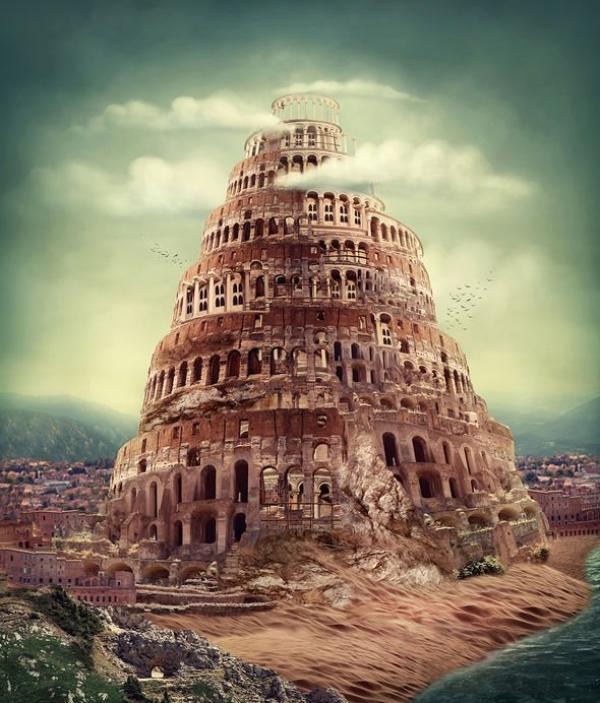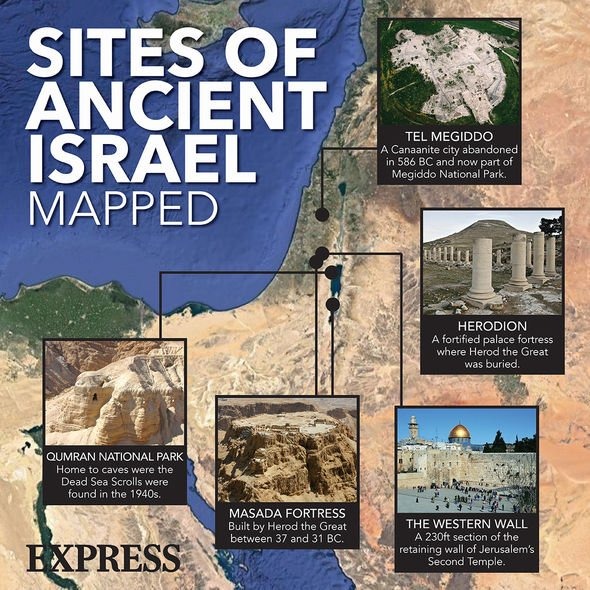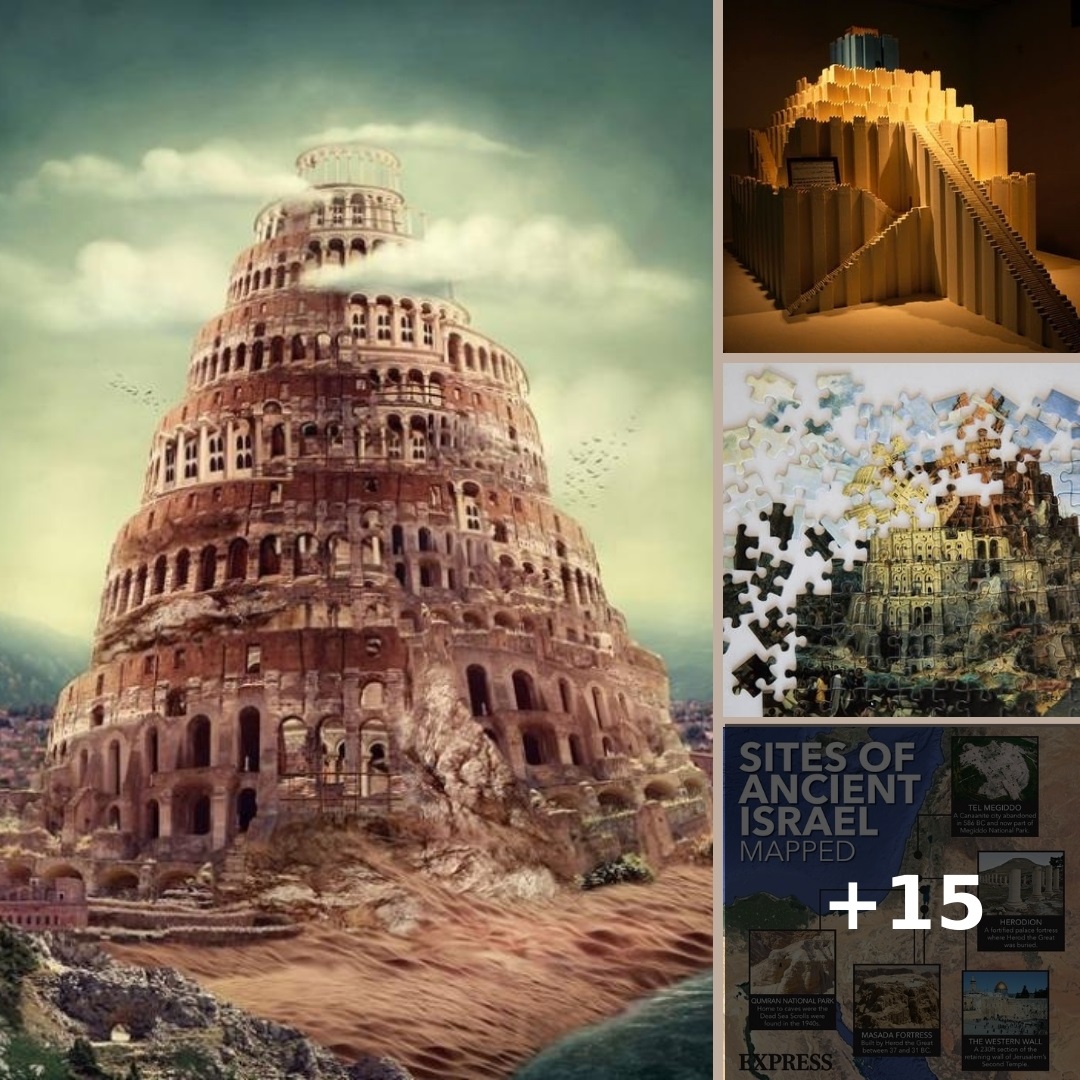ARCHAEOLOGICAL evidence has come to light to prove the Biblical Tower of Babel was real, a scripture expert has astonishingly claimed.

Archaeology news: The Tower of Babel is described in the Bilbe’s Book of Genesis (Image: GETTY)
The Tower of Babel appears in the Bible’s Book of Genesis and is often described as the world’s very first skyscraper. As the story goes, sometimes after Noah’s flood, a united force of humans began constructing the most impressive structure ever seen in an attempt to reach the heavens and God himself. Angered, God steps in and scrambles everyone’s languages, thus preventing the people from finishing their project.
Genesis 11 reads: “But the Lord came down to see the city and the tower the people were building.
“The Lord said, ’If as one people speaking the same language they have begun to do this, then nothing they plan to do will be impossible for them.
“’Come, let us go down and confuse their language so they will not understand each other.’”
The account of the Tower of Babel is widely accepted as an allegorical tale and an origin myth explaining the world’s languages.
Sponsored

Archaeology news: Experts think the tower’s story was inspired by the Etemenanki ziggurat (Image: GETTY)
And though few people believe such an impressive structure ever stood, a Bible expert who has memorised more than 20 books of scripture thinks there is archaeological evidence to back its existence.
Tom Meyer, a professor of Bible studies at Shasta Bible College and Graduate School in California, US, told Express.co.uk: “When the crème de la crème of the international community was wearing fine linen, purple and scarlet and smelling like cinnamon and frankincense, the new vacation hotspot was the rebuilt Tower of Babel in Babylon.
“Everyone was excited by the intriguing reports that the work on the Tower of Babel, which had stopped and then was restarted (by Hammurabi – 1792 to 1750 BC) only to be stopped again for 1,500 years, had been completed by famed builder, Nebuchadnezzar 2, king of Babylon (605 to 562 BC).
“They’d heard a rumour that the top of the temple contained a portal that transported you to heaven.
“According to Henry Hampton Halley (Halley’s Bible Handbook), the judgment of the confusion at the original Tower of Babel occurred in the fourth generation after the flood, around the time of the birth of Peleg (Genesis 10:25); this was 100 years after the Flood of Noah and 325 years before Abraham first came to the Holy Land (about 2000 BC).
Bible: Expert claims communion wafer turned ’red’ in 1996
0 seconds of 1 minute, 23 secondsVolume 90%
“It was this famous tower mentioned in the book of Genesis that Nebuchadnezzar finished; there is archaeological evidence that could corroborate this.”
According to the Zondervan Handbook of Biblical Archaeology, the oldest-known representation of the tower appears in a black stele dated to the reign of Nebuchadnezzar.
Stele or stela are stone or wooden slabs erected in the ancient world as a monument, typically with inscriptions, reliefs and carvings.
The stele is found in The Schoyen Collection but its cuneiform inscriptions – an ancient form of writing – has been authenticated.

Archaeology news: The Biblical story explains why people speak different languages (Image: GETTY)
Professor Meyer said: “According to the Schoyen Collection, there is a carving of the Tower of Babel that shows the relative proportions of the seven stages of the ziggurat-like structure.
“To the right of the Tower stands Nebuchadnezzar with his royal conical hat, holding a staff in his left hand and in his right hand perhaps the building plans for the Tower.
“The stele’s inscription describes a boast very similar to the one made by the original builders in the Genesis account.
“Nebuchadnezzar bragged, ’I made it the wonder of the people of the world… I built their structures with bitumen and baked brick throughout. I completed it raising its top to the heaven, making it gleam bright as the sun.’
“The scholars who published the Tower of Babel stele maintain that Nebuchadnezzar actually did restore the original Tower of Babel.”

Archaeology news: Sites of ancient Israel mapped out (Image: EXPRESS)
This version of history, of course, is strongly disputed by historians.
Instead, the Tower of Babel has been associated with the Etemenanki, a ziggurat temple dedicated to the deity Marduk in ancient Babylon.
The ziggurat’s ruins sit about 56 miles south of Baghdad in Iraq and the construction has been dated to between the 14th and ninth centuries BC.
The widely accepted theory is the Tower of Babel was inspired by the Etemenanki, which was rebuilt by Nebuchadnezzar II after Babylon’s destruction in 689 BC.
In the 2002 book Understanding the Bible, author Stephen L. Harris argued the myth may have been inspired during the Babylonian captivity, when Jews were driven out of Judea after the siege of Jerusalem in 597 BC.

